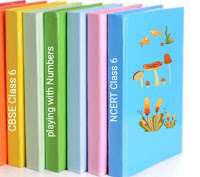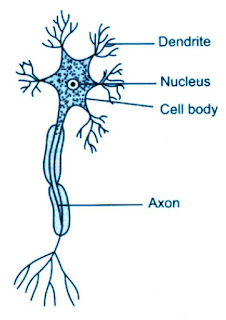NCERT Solution for Class 6 Maths Chapter 3 Playing with Numbers Ex 3.2
Playing with Numbers: Here you get NCERT Solutions for Class 6 Maths Chapter 3 Playing with Numbers Ex 3.2 with Answers Pdf free download.In NCERT Solution Class 6 Maths with Answers you get question-answer based on latest exam pattern. By providing NCERT Chapter-wise Class 6 Maths Questions with Answers our target to help students get concept of the lesson very well.
You can also visit NCERT Questions for Class 6 Maths Chapter-wise Questions with Answers to revise your syllabus thoroughly and enhance the chances of securing high marks in your board exams. It also helps in your CBSE NCERT Class 6 online test, online exam for admission well.
-------------------------------------------------------------
Board CBSE
-------------------------------------------------------------
TextBook NCERT
-------------------------------------------------------
CLASS Class 6
--------------------------------------------------------
SUBJECT Maths
----------------------------------------------------------
CHAPTER Chapter 3
-------------------------------------------------------------
SUBJECT Playing with Numbers
--------------------------------------------------------------
Visit NCERT Solutions
-------------------------------------------------------------------
NCERT Class 6 Chapter 3 Ex 3.1
NCERT Class 6 Chapter 3 Ex 3.3
NCERT Class 6 Chapter 3 Ex 3.4
NCERT Class 6 Chapter 3 Ex 3.5
NCERT Class 6 Chapter 3 Ex 3.6
NCERT Class 6 Chapter 3 Ex 3.7
You May Like
NCERT Solutions Class 6 Science
NCERT Solutions for Class 6 Maths Chapter 3 Playing with Numbers Ex 3.2 with Answers
Exercise 3.2
Question 1:
What is the sum of any two:
(a) Odd numbers.
(b) Even numbers.
Answer 1:
(a) The sum of any two odd numbers is an even number.
As for example: 5 + 7 = 12, 7 + 9 = 16
(b) The sum of any two even numbers is an even number.
As for example: 12 + 14 = 26, 16 + 18 = 34
Question 2:
State whether the following statements are true or false:
(a) The sum of three odd numbers is even.
(b) The sum of two odd numbers and one even number is even.
(c) The product of three odd numbers is odd.
(d)If an even number is divided by 2, the quotient is always odd.
(e) All prime numbers are odd.
(f) Prime numbers do not have any factors.
(g) Sum of two prime numbers is always even.
(h) 2 is the only even prime number.
(i) All even numbers are composite numbers.
(j) The product of two even numbers is always even.
Answer 2:
(a) The sum of three odd numbers is even.
(False)
(b) The sum of two odd numbers and one even number is even.(True)
(c) The product of three odd numbers is odd.(True)
(d)If an even number is divided by 2, the quotient is always odd.( False)
(e)All prime numbers are odd.( False)
(f) Prime numbers do not have any factors.(False)
(g) Sum of two prime numbers is always even.(False)
(h) 2 is the only even prime number.(True)
(i) All even numbers are composite numbers. (True)
(i) All even numbers are composite numbers.(False)
(j) The product of two even numbers is always even.(True)
Question 3:
The numbers 13 and 31 are prime numbers. Both these numbers have same digits 1 and
3. Find such pairs of prime numbers up to 100.
Answer 3:
17 and 71; 37 and 73; 79 and 97
Question 4:
Write down separately the prime and composite numbers less than 20.
Answer 4:
Prime numbers : 2, 3, 5, 7, 11, 13, 17, 19
Composite numbers : 4, 6, 8, 9, 10, 12, 14, 15, 16, 18
Question 5:
What is the greatest prime number between 1 and 10?
Answer 5:
The greatest prime number between 1 and 10 is ‘7’.
Question 6:
Express the following as the sum of two odd numbers:
(a) 44 (b) 36 (c) 24 (d) 18
Answer 6:
(a) 5 + 39 = 44
(b) 7 + 29 = 36
(c) 9 + 15 = 24
(d) 11+ 7 = 18
NCERT Solutions for Class 6 Maths Chapter 3 Playing with Numbers Ex 3.2 with Answers
Question 7:
Give three pairs of prime numbers whose difference is 2.
[Remark: Two prime numbers whose difference is 2 are called twin primes.]
Answer 7:
3 and 5; 5 and 7; 11 and 13
Question 8:
Which of the following numbers are prime:
(a) 23 (b) 51 (c) 37 (d) 26
Answer 8:
(a) 23 and (c) 37 are prime numbers.
Question 9:
Write seven consecutive composite numbers less than 100 so that there is no prime number between them.
Answer 9:
Seven consecutive composite numbers:
90, 91, 92, 93, 94, 95, 96
Question 10:
Express each of the following numbers as the sum of three odd primes:
(a) 21 (b) 31 (c) 53 (d) 61
Answer 10:
(a) 21 = 3 + 7 + 11
(b) 31 = 5+7+19
(c) 53 = 29+17+7
(d) 61 = 19 + 31+ 11
Question 11:
Write five pairs of prime numbers less than 20 whose sum is divisible by 5.
[Hint: 3 + 7 = 10]
Answer 11:
2 + 3 = 5;
2 + 13 = 15;
3 + 7 = 10
3 + 17 = 20;
7 + 13 = 20;
Question 12:
Fill in the blanks:
(a) A number which has only two factors is called a _______________.
(b) A number which has more than two factors is called a _______________.
(c) 1 neither _______________ nor _______________.
(d) The smallest prime number is _______________.
(e) The smallest composite number is _______________.
(f) The smallest even number is _______________.
Answer 12:
(a) A number which has only two factors is called a prime number
(b) A number which has more than two factors is called a composite number.
(c) 1 neither a prime number nor a composite number.
(d)The smallest prime number is 2.
(e) The smallest composite number is 4.
(f) The smallest even number is 2.
NCERT Solutions for Class 6 Maths Chapter 3 Playing with Numbers Ex 3.2 with Answers


